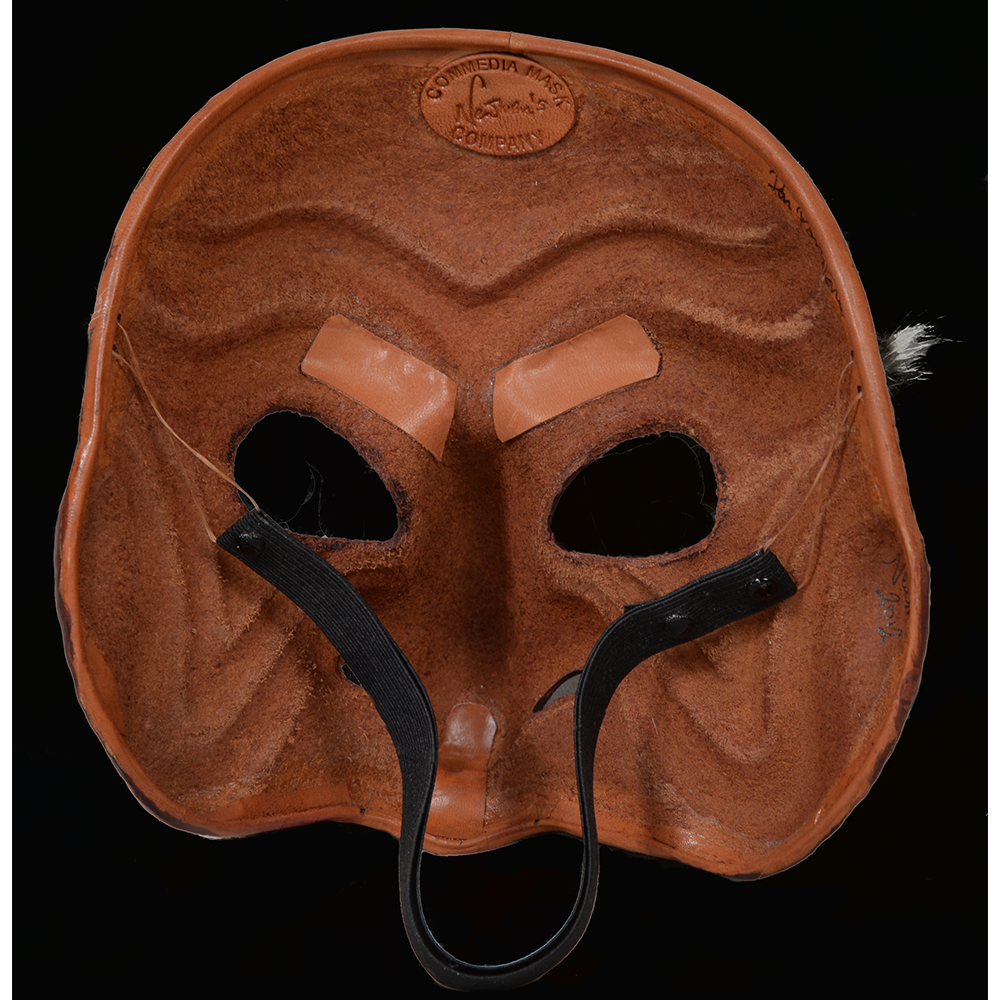
Commedia dell’Arte Pantalone Second Face
Pantalone is without doubt the real 100% Venetian mask. It is reported that Pantalone was one of the first steady characters in the Commedia dell'Arte, since the beginning. He appears in a Canovaccio (vague plot outline) for a play represented at the Court of Bavaria (DE) in 1568. The Pantalone character, in the Commedia dell'Arte.
.jpg)
A MEISSEN COMMEDIA DELL'ARTE FIGURE OF PANTALONE , CIRCA 1737 Christie's
A stock character of the 16th-century Italian commedia dell'arte, Pantaloon, or Pantalone in Italian, was a cunning and greedy yet often deceived Venetian merchant. He was typically dressed in a tight-fitting red vest, red breeches and stockings, a pleated black cassock, slippers, and a soft brimless hat. His mask was gaunt and swarthy with a.
.jpg)
Sergei Sudeikin (18821946) , Three Commedia dell'arte costume designs Jester, Pantalone and
Italian: Pantaloon, stock character of the 16th-century Italian commedia dell'arte—a cunning and rapacious yet often deceived Venetian merchant. Pantaloon dressed in a tight-fitting red vest, red breeches and stockings, a pleated black cassock, slippers, and a soft brimless hat. Later versions of the character sometimes wore long trousers.

Berliner Zinnfiguren Commedia dell´Arte Pantalone Online kaufen
Pantalon, Pantalone, en italien, est un personnage type de la commedia dell'arte portant une culotte longue. Bien que l'habit du personnage soit originairement collant et rouge, le mot pantalon désigne actuellement toutes sortes de culottes longues.

Commedia dell'arte Pantalone Thomas Fulda Flickr
Pantalone. Pantalone, another prominent Commedia dell'arte clown, was often portrayed as an elderly, wealthy merchant or father figure. His distinct physicality, with a hunched back and a long-nosed mask, contributed to his portrayal as a miserly and shrewd character. Pantalone's interactions with other characters, particularly his desire.

Commedia dell' arte Pantalone um dos Vecchi Foto de Telmo Pedrosa Olhares
Pantalone also known as Pantaloon and also refereed to as veechi, meaning old menis a Commedia Dell'arte stock character. Pantaloon is the constant and vital character in the plot of Commedia Dell'arte. He is described as "Venetian merchant that controls finance in the character world of Commedia Dell'arte, because of his status, "his orders.
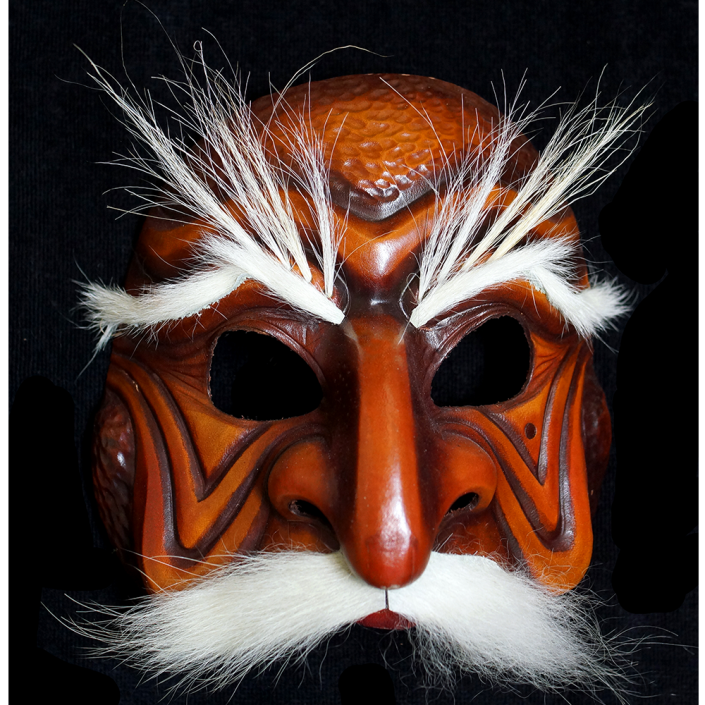
Commedia dell’Arte Pantalone Second Face
Pantalone! What to say about him? He's globally known as Commedia dell'Arte's "bad guy". True!Somebody though might not know that Pantalone's influence can s.

Pantalone, maschera veneziana della Commedia dell'arte Commedia dell’arte, Art prints, Stock
XVIe siècle. Pantalon vu par Maurice Sand, 1860. Pantalon, personnage de la commedia dell'arte. Pantalon, Pantalone, en italien, est un personnage type de la commedia dell'arte portant une culotte longue. Bien que l'habit du personnage soit originairement collant et rouge, le mot pantalon désigne actuellement toutes sortes de culottes.
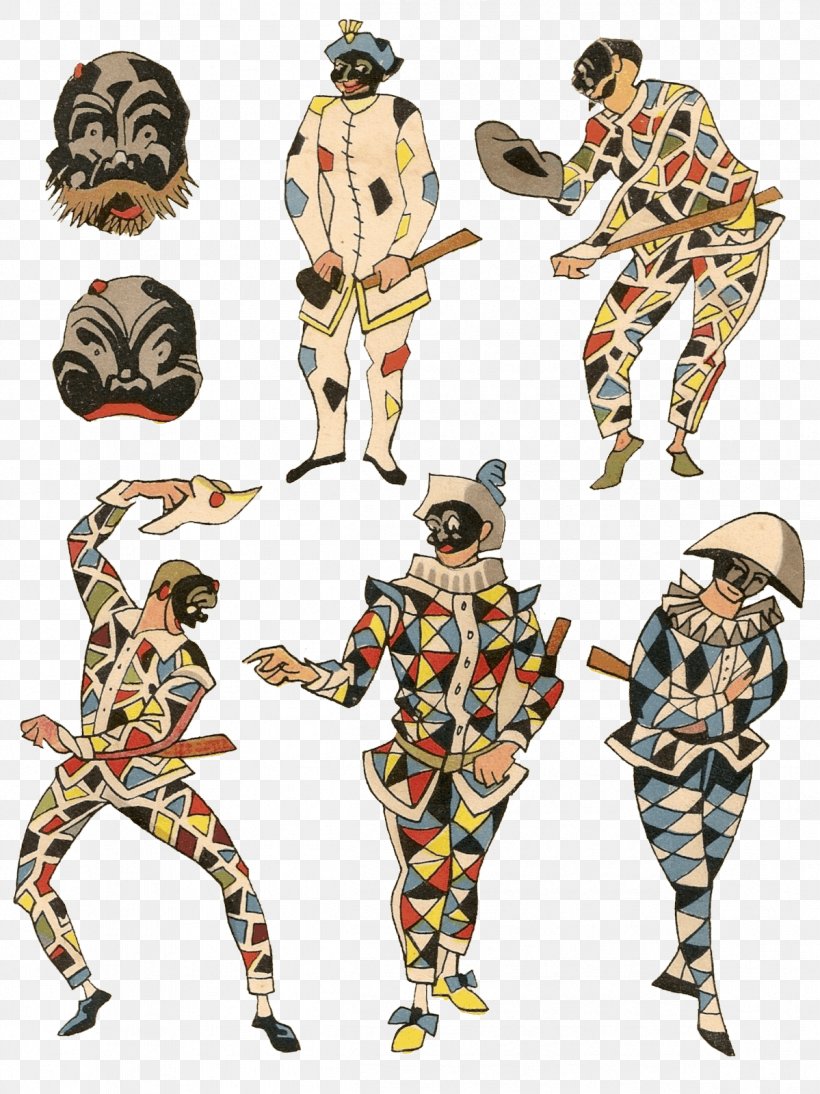
Harlequin Pantalone Brighella Commedia Dell'arte Zanni, PNG, 1199x1600px, Harlequin, Art
Commedia dell'arte, a form of Italian theatre that originated in the 16th century, is known for its improvisational nature and stock characters. These characters, which are still used today in theatre and media, are divided into four main groups, each with its unique characteristics and purposes.. Pantalone: A greedy and lustful old man.
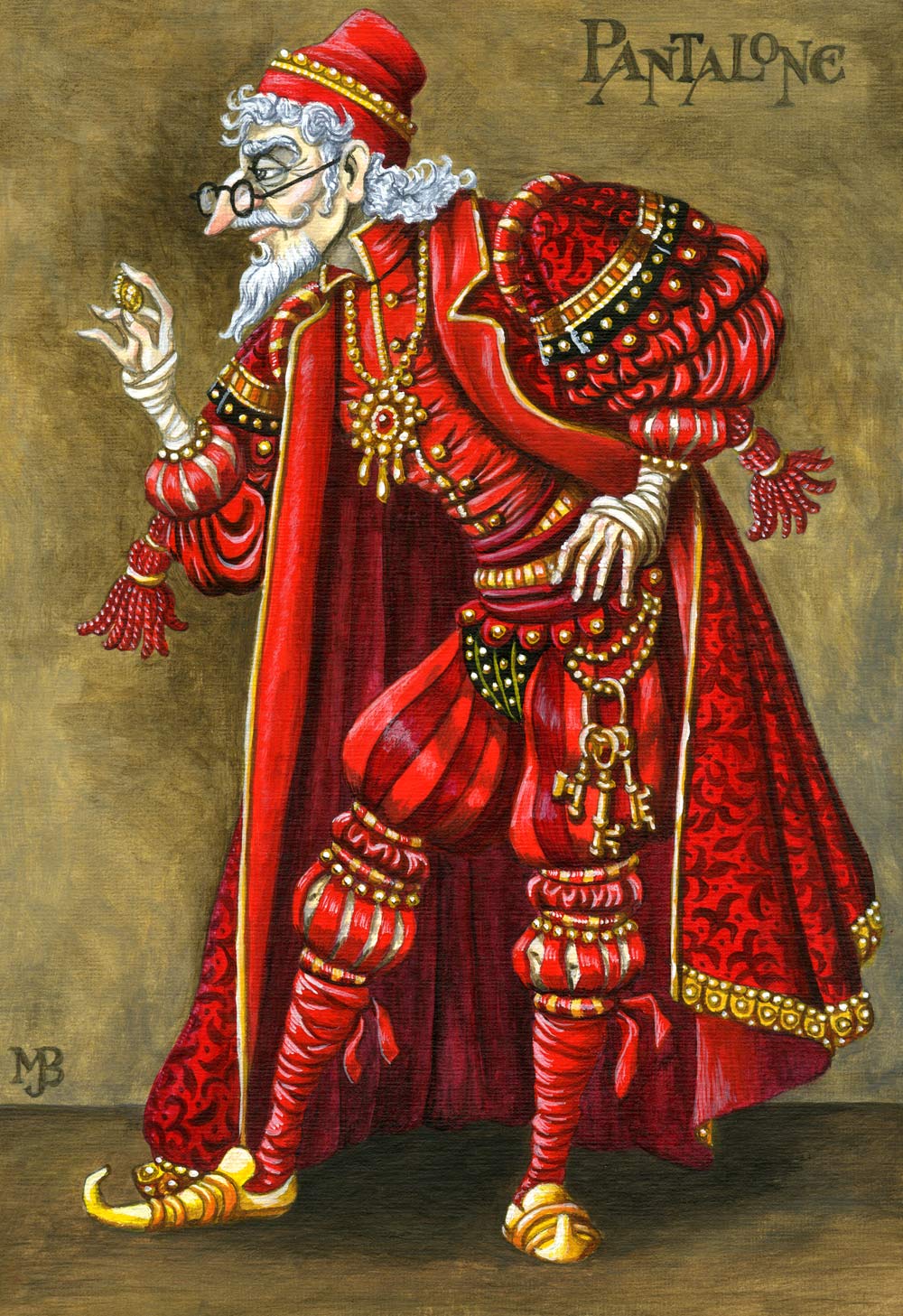
Pantalone by ravenscar45 on DeviantArt
Pantalone est l'un des personnages principaux les plus célèbres de la Commedia dell'arte et du Carnaval d'Italie, mais quelles sont ses origines, et qu'est-ce qu'il représente ? Le personnage est né à Venise autour de la première moitié du seizième siècle et trouve son origine dans la Comédie des artistes professionnels.

Pantalone Commedia dell'Arte Mask
Commedia dell'arte, Italian theatrical form that flourished throughout Europe from the 16th through the 18th century.. Pantalone was a Venetian merchant: serious, rarely consciously comic, and prone to long tirades and good advice. Dottore Gratiano was, in origin,.

Pantalone Pantaloon Is One Of The Most Important Principal Characters Found In Commedia Dellarte
Pierrot, Pulcinella, & Pantalone. The comedy in commedia dell'arte performances usually comes at someone's expense. The naive Pierrot is known as a sad clown; he is dressed in frills and puffy.

Brighella Pantalone Columbina Harlequin Commedia dell, arte, png PNGEgg
Pantalone is one of the most famous principal characters of Commedia dell'arte, and the Italian Carnival, but what are his origins, and what does he represent? The character was born in Venice around the first half of the sixteenth century and has origins in the Comedy of Professional Artists. Pantalone represented the typical greedy, lustful.

Maschere della Commedia dell'Arte Pantalone Maschere, Arte, Commedia
Pantalone, by Maurice Sand. Pantalone [pantaˈloːne], spelled Pantaloon in English, is one of the most important principal characters found in commedia dell'arte.With his exceptional greed and status at the top of the social order, Pantalone is "money" in the commedia world. His full name, including family name, is Pantalon de' Bisognosi, Italian for "Pantalone of the Needy".
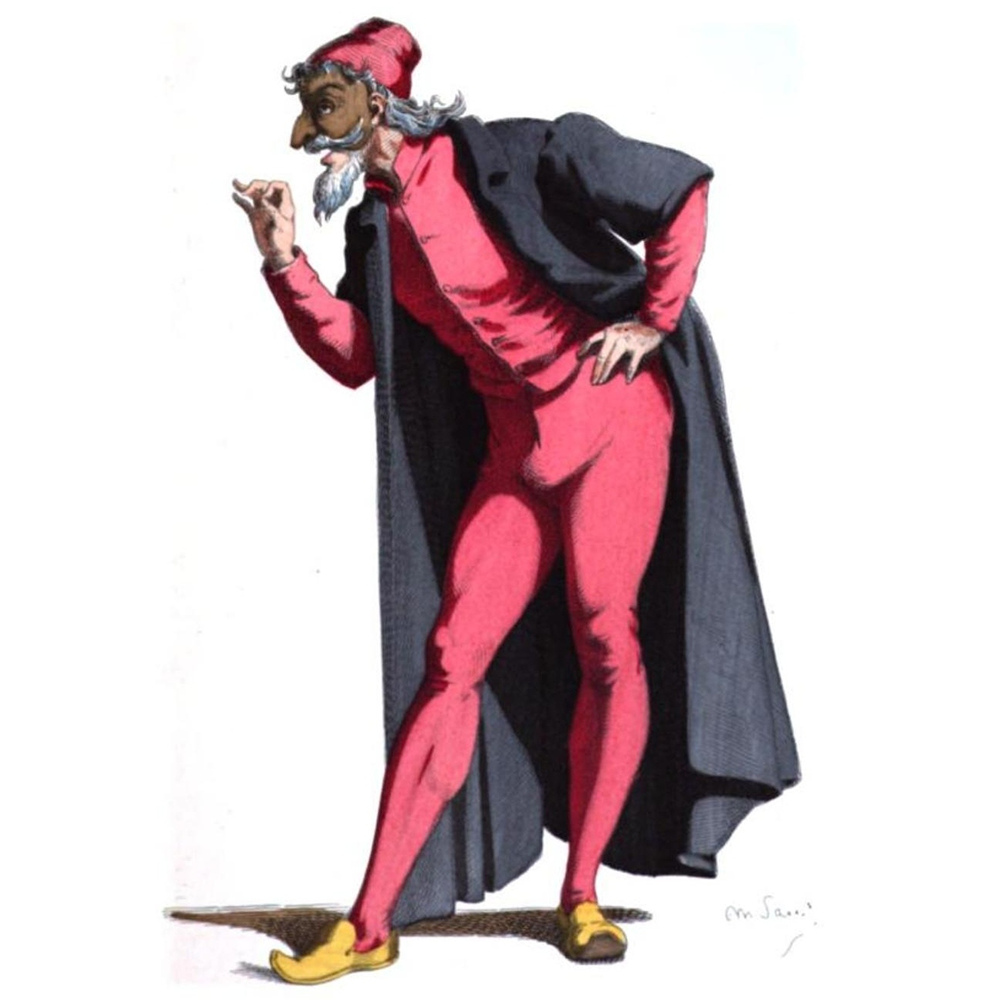
Commedia dell’Arte Pantalone Second Face
Dei Zanni ("the zanni ") was a generic term for the commedia dell'arte itself. The zanni 's costumes consisted of a wood or leather half mask with hair and beard glued to it, a loose blouse, wide trousers, and a wide-brimmed or tall conical hat with long feathers. Zanni initiated the action of the play and produced comic impact based on.

Pantalone, Pantaloon Character illustration, Commedia dell’arte, Character
Each character in Commedia dell'arte is distinctly different, and defined by their movement, actions, masks, and costumes.These costumes show their social status and background. Pantalone typically wore tight red pants and a matching shirt, a long black cape, black or red pointed shoes, and a belt that had a purse attached. Pantalone also carried a knife and handkerchief, and wore glasses.